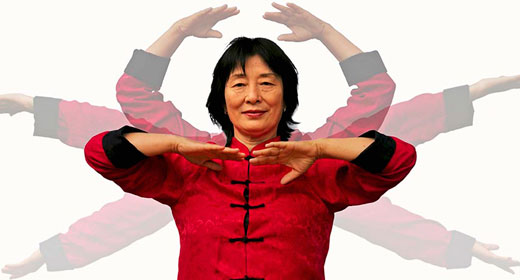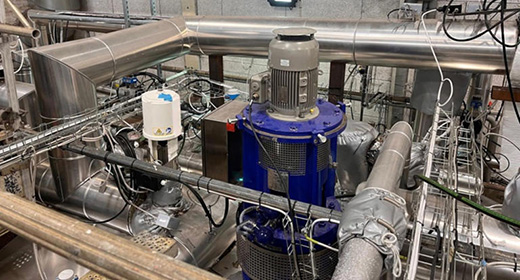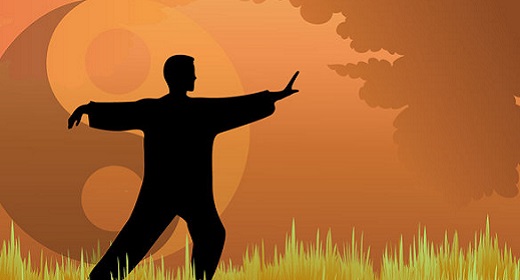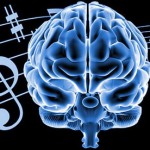What Is Qi Gong?
Qi gong is the Chinese name for “internal energy exercise”, which engage the body and boost the body’s energy levels through low-impact, targeted movements. Different ways in which the mind’s intent can be applied to affect these motions are also practised to enhace brain-mind functioning. Tai chi is a sophisticated, more complex form of qi gong renowned for its health benefits.
Qi gong and tai chi exercises are practised in three progressive stages with the purpose of systematically improving overall health and vitality, healing the body from illness and injury, and developing the powers of the mind, such as concentration, focus and mental acuity.
The three stages can be realised through slow-motion, gentle and repetitive exercises that:
- Stretch the body’s soft tissues to circulate bodily fluids and thereby upgrade body functions, such as those of the cardiovascular, immune, respiratory, digestive and nervous systems;
- With practice, give you access to the energy that powers your physical body;
- Once you access your energy, allow you to apply your mind’s intent to move energy at will, which is a valuable skill to develop since energy governs all bodily functions and therefore ultimately determines your state of health.
Benefits of Training Qi Gong + Tai Chi
Working in a similar fashion to acupuncture, qi gong first works on the outer meridians of the body and through these affects the core energy to release pain and disease. In time, you can systematically balance your energy, which supports overall health and well-being. This approach to exercise activates one or two energy lines at a time and therefore requires a set of coordinated movements.
Within the specific qi gong systems I offer, I teach nei gong, precise and more advanced internal techniques to develop your core energy, and open and energise all the energy lines of your body simultaneously. This is achieved through direct activation of the left, right and central channels of energy, which govern and feed the outer meridian lines.
Breathing techniques may or may not be synchronised with the flow of energy, depending upon the way in which you direct your mind’s intent. Both qi gong and tai chi use whole-body, diaphragm breathing techniques with the purpose of moving your life-force energy and thereby activate the entire organ base to increase vitality. Learn more about diaphragm breathing…
5 Element Qi Gong
Old Taoism’s approach to the Five Elements is primarily concerned with transformation in body, mind and energy. The Transformational Cycle is represented as:
Water-Fire-Wood-Metal-Earth
The realm of the Five Elements is colossal as it encompasses the entirety of manifestation—providing invaluable insight into the complex world in which we live. Two ways to gain experiential knowledge of the elements are:
- Direct—making contact with the elements themselves, which requires deep meditation guided by a true adept. Both the transmitter and receiver must be adequately and highly trained, so only the elite reach this level of practice.
- Indirect—creating specific weaves of nei gong to uncover the underlying nature of each of the elements, which amounts to a far less challenging task—albeit requiring dedicated practice over some years.
To directly experience the elements, you must either develop and refine sensitivity to them, or complete a good portion of the internal content available in the 16 nei gong. Although you may have some fantastic experiences related to practice, they really will do little to help you grasp or engage on any genuine level your ability to work with the Five Elements.
Whereas, you can basically start playing with nei gong weaves that yield specific elemental qualities from the moment you begin learning a qi gong set or applying your mind’s intent in sitting meditation practice. This is possible because qi gong exercises bring alive certain nei gong components and create a distinct feeling when practising each elemental set.
5 Element Qi Gong Systems
I offer training in elemental qi gong sets to help you achieve the tenets of practice under each of the Five Elements:
- The Water Element focuses on cleansing—the downward flow of energy clears blockages and initiates the root.
- The Fire Element focuses on energising—the upward flow of energy energises and amplifies all that it touches (for advanced students only).
- The Wood Element focuses on expansion—combining the upwards and downwards flows of energy to create more internal space.
- The Metal Element focuses on condensing—periphery-to-centre and centre-to-periphery flows of energy to generate raw power (for advanced students only).
- The Earth Element focuses on integration—the spherical, pulsating flow of energy to intertwine and balance your entire mind-body-energy matrix.
Training begins with the Water, Wood and Earth Elements. Once you have prepared your body-mind-energy for the more advanced and potentially destabilising exercises of the Fire and Metal Elements, then and only then would it be advisable to engage in these exercises. However, most students find all they need and more from Water, Wood and Earth Element practices.









































